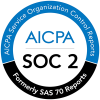Recently, The European Supervisory Authorities (ESAs) consisting of ESMA, EBA and EIOPA, published their first annual report on the extent of voluntary disclosure of principal adverse impact under the Sustainable Finance Disclosure Regulation (SFDR). This annual report considers the implications of due diligence practices on disclosures under the SFDR Regulation and provides guidance on this matter. A survey is conducted among the National Competent Authorities (NCAs). The report highlights examples of best practices, less-than-ideal voluntary disclosures, as well as the ESAs’ preliminary recommendations.

The survey of the NCAs aims to gather feedback on voluntary disclosure of Article 4(1)(a). Moreover, collecting information on why some FMPs (Financial market players) don’t consider adverse impacts of sustainability factors on investment decisions per Article 4(1)(b). The NCAs ask feedback through a series of 9 questions about the current state of voluntary disclosures. This survey samples 33 comments which were thoroughly examined by the ESAs, who created a list of good examples of best practices to be followed by April 2022 as well as some initial recommendations. Good examples of best practices include: Providing PAI Statements and making these disclosures easily accessible on websites, Providing a clear description of the process concerning consideration of PAI although data availability is still limited. All of them are based on a combination of NCA responses—the most pertinent extracts from which are included in this report anonymously—and desk research conducted by ESA officials.
Conclusion of the ESAs report
Initially, it is challenging to pinpoint specific trends when it comes to the degree of compliance with voluntary disclosures under Article 4 (1) (a) across jurisdictions and FMPs covered by SFDR. Especially, considering different size, nature and scope of activities across FMPs, it is hard to draw any conclusions within different FMPs comparison.
Nevertheless, below are the key findings of the report:
1. When FMPs are part of a larger group, the group is more likely to provide more comprehensive information on the group’s approach to principal adverse impacts (PAI), as well as related policies.
2. Some FMPs include unrequired information in their due diligence statement disclosures under PAI disclosures, which can be misleading to investors. This could be due to regulatory uncertainty and incompleteness, a lack of information and clear methodology for obtaining data from issuers, and the cost to implement. BIQH is able to deliver data from various well known and lesser known data providers and to give insights in data quality and coverage among data providers. This will help you in discovering which data provider is suitable for you and how to obtain the best possible quality and coverage. A number of NCAs have noted that they will follow up individually with supervised entities to inquire the reason for non-compliance and have already included this follow up action as part of their annual supervisory programs.
3. There is a low level of compliance with the details required to explain why FMPs do not take the adverse impact into account when making investment decisions. While SFDR Article 4(1)(b) requires that, where an FMP does not consider adverse impacts of investment decisions on sustainability factors, it must publish and maintain on its website clear reasons for why it does not do so, and where relevant, information as to whether and when it intends to do so.
4. There is an overall low level of disclosure of the degree of alignment with the objective of the Paris agreement, noting that when disclosure of alignment is made, it is often vague and lacking details. A good example of Alignment with Paris agreement includes further details about decarbonization path and more data, for instance, credible decarbonization objectives, upstream and downstream emissions, setting out scale and timeline for action to achieve the trajectories consistent with the Paris Agreement, and aligning specific investments with carbon neutral trajectories.
What’s coming next
The Commission may consider the ESAs’ findings and incorporate them into any preliminary evaluation of the SFDR’s operation. To review the PAI framework, the ESAs may also take into account the findings of the work on the new mandate received on April 28, 2022. In the next year’s report, the ESAs will consider all of the level 2 requirements on the PAI Statement, as well as Article 7. In general, the practices will be further enhanced in subsequent reports.
How can BIQH help
The ESAs have already created mandatory reporting templates for sustainability indicators and negative sustainability impacts that are included in the Annexes of the draft RTS and adopted by the Commission through the Delegated Regulation supplementing SFDR. These templates will be in effect as of January 1, 2023. Prior to the template, the calculation tool for PAI is essential. BIQH has a mature calculation tool for sustainability indicators and excellent support team, our client are diversified in the Financial industry. In addition, BIQH has ample experience with well known and lesser known data providers. We’re here to help you to make informed decisions to ensure the best possible data quality and coverage.



